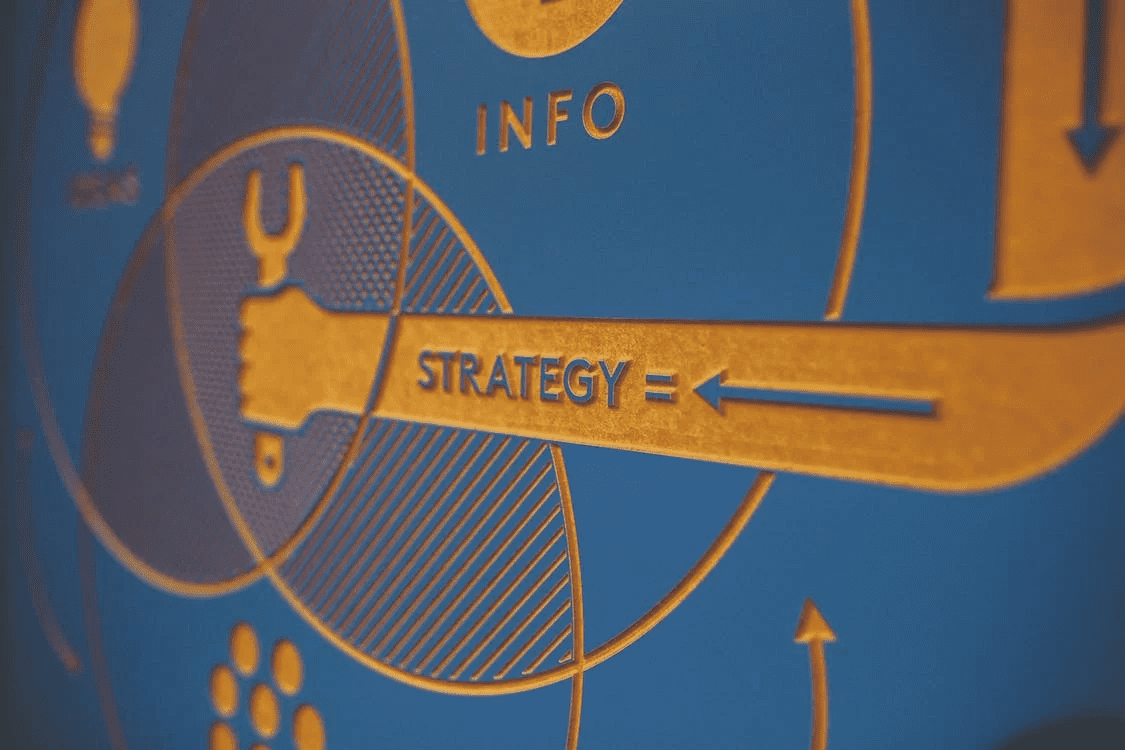Human Resource Planning: Definition, Objectives, And Steps
Human resource planning is an essential part of every successful business. Unfor...

Most businesses have some type of human resource management plan — even if it’s just a rudimentary process for hiring and onboarding. But the businesses that want to succeed incorporate strategic human resource management into their workflows.
In this article, the workforce-optimization experts at Sling define this high-level practice, examine why it’s important, and discuss ways to integrate it into your business.

Strategic human resource management (or SHRM for short) is a holistic approach to assembling the best team for your business’s growth and success.
To fully understand strategic human resource management, it’s vital that you’re first familiar with regular human resource management. Human resource management (HRM) is the process and practice of recruiting, hiring, and onboarding the best employees for your business.
HRM also includes providing your employees with the training, development, work environment, benefits, and compensation they need to perform at their best amongst their coworkers and within your company in general.
Strategic human resource management takes these activities to the next level by hiring and training employees in alignment with the goals of the business and the vision statement, mission statement, and organizational strategies that guide them.
The formal definition of SHRM is:
The process and practice of attracting, hiring, developing, rewarding, and retaining employees for their benefit and the benefit of each department and the business as a whole.
A human resource department that works under the auspices of SHRM must, by necessity, interact with other divisions within your business in order to:
Strategic human resource management is a more integral, hands-on approach to furthering the interests and abilities of your business.

Strategic human resource management is the foundation of a strong business because, when properly applied, it ensures that the company as a whole is working together to reach its goals. This gives the business a greater chance to succeed.
Think of your business like a racecar and the components of that car like the departments within your business.
The goal of the racecar is to be the first to cross the finish line. If all the components are working at 100 percent, the race is much easier.
But if the tires are a little low on air, the brakes are overworn in spots, and the engine timing isn’t dialed in, the racecar may fall behind.
SHRM, then, is like the mechanic and pit crew that work hard to ensure that the racecar is in the best possible shape to reach the checkered flag before the other cars.
A human resources department practicing SHRM analyzes the performance of each department and how they’re working together with the other parts of the business.
They then identify ways that departments can change in order to get better and hire employees with the right mix of skills and abilities to make that possible.
All of that being said, your business can function without a formal strategic human resource management plan — many companies do and have for a long time.
But those businesses are often practicing SHRM without even realizing it. SHRM is part of their overall strategy, but they call it by some other name or don’t delineate it from regular human resource activities.
And, really, that’s not surprising. It can be a significant challenge to make SHRM a separate part of your organization and to put plans in place to govern the process. But the benefits far outweigh the drawbacks.
For instance, once established, SHRM can help your business:
When you step back and examine your business as a whole, you’ll find that human capital management is one of the most fundamental parts of your operation. Strategic human resource management helps you maximize its incredible potential.

As we mentioned earlier, strategic human resource management is about assembling the best team for your business’s growth and success. At its most basic, the objective of the process is to match the right employees with the right jobs in your organization.
Your HR department can do this while interviewing prospective employees or even during the performance review of a long-time team member who is reaching out for more responsibility.
But the goals of SHRM don’t stop there. Other SHRM objectives include:
As you can see, SHMR is integral to the successful operation of your business and its growth over both the short and long term.
Because this process is connected to every aspect of your business, you may feel overwhelmed by the prospect of creating a new SHRM strategy.
Don’t let this prevent you from implementing a system that can revolutionize the way your business operates — both now and in the future.
Keep in mind that strategic human resource management doesn’t have to address all of the objectives on this list from the moment it goes into effect. Start small and expand into different areas once you’ve addressed one or two objectives.

Before we move on to the nuts and bolts of the strategic human resource management process, it’s important to understand where SHRM falls in the grand scheme of your business.
SHRM is part of the larger category of business activity known as human resources (HR). HR is a foundational component of your business that deals with what is, perhaps, the most important asset of all: people.
Human resources also includes such activities as human resource planning (HRP) and, at a higher level, even dovetails into organizational strategy.
How does it all fit together to make your company successful? It helps to visualize various activities on a scale from “simple” to “complex” (or, perhaps, practical to theoretical). Let’s start at the bottom and work our way up.
Earlier in this article, we discussed one of the most basic functions of human resources: matching the right person with the right job. From there, we move up the “complexity” scale to Human Resource Planning (HRP).
HRP is the ongoing process of systematically planning ahead to optimize and maximize the hiring and retention of high-quality employees. Essentially, then, HRP is about looking at the hiring process as a whole and improving the way your business matches employees to jobs.
Further up the human resources scale, we come to SHRM, which is, as we’ve discussed, a holistic approach to assembling the best team for your business’s growth and success.
At first glance, it may appear that HRP and SHRM are the same activity under a different name. They seem so similar because one is actually part of the other.
In this case, HRP is a small part of SHRM. Viewed from a different perspective, SHRM contains and governs HRP.
It’s very much like a set of nesting dolls: the smaller one (HRP) fits nicely into the next largest (SHRM), which, in turn, fits into the next largest, and so on.
For practical purposes, it helps to think about HRP as part of the frontline, boots-on-the-ground application, while SHRM is the guiding principle behind those applications.
In other words, SHRM is the why to HRP’s what.
Another way to think about SHRM and HRP is to view your business as a large, complicated machine.
HRP is one component (a gear, for example) that works with other similar components (e.g., production, logistics, shipping, management, etc.) to keep the machine running.
Strategic human resource management, on the other hand, takes a step back and analyzes the machine itself.
SHRM looks at the performance of each component (each department in your business), how they work together to make everything run smoothly, and what the business as a whole can do to improve.
But is SHRM the final step in the process? Is it the force that guides everything else? No, it’s not. Above SHRM lies your business’s organizational strategy.

Organizational strategy, at its most basic, is a plan that specifies how your business will allocate resources to support infrastructure, production, marketing, inventory, and other business activities.
How does this affect SHRM? Think of it like this: Organizational strategy directs SHRM directs HRP. In many ways, the strategy side of your business mirrors the relationship between SHRM and HRP.
Organizational strategy is subdivided into three distinct categories: corporate strategy, business strategy, and functional strategy. Just like SHRM and HRP, each level is a part of the one above it.
Corporate level strategy is the main purpose of your business — it’s the destination toward which your business is moving.
Business level strategy is the bridge between corporate level strategy and much of the “boots-on-the-ground” activity that occurs in functional level strategy.
Functional level strategy is the specific actions and benchmarks you assign to departments and individuals that move your business toward the goals created by your corporate level strategy. They are a direct offshoot of your business level strategies.
With those categories in mind, you start to see the bigger picture of your business: SHRM is a component of your business level strategy, while HRP is a component of your functional level strategy.
So, how do we get from the theory of SHRM to the practice of SHRM? In other words, where does the rubber meet the road? We’ll address that issue in the next section.

Before you can implement SHRM, you must understand your business goals.
Whether it’s increased market penetration, expansion into new markets, or a stronger bottom line, once you set goals, you can formulate strategies (functional, business, and corporate) to make those objectives possible.
With this road map in mind, your HR department can then begin the process of implementing strategic human resource management.
When you’ve established where you want your business to go — via the goals and strategies created in step one — you can evaluate your current team to see how their skills contribute to the objectives you’ve set.
It’s also essential to identify the team members who are interested in receiving training in new aspects of your business
A great time to assess all of these details is during your periodic performance reviews.
Analyzing your HR capabilities is vital if you want your new strategies to succeed.
Is your HR department equipped and prepared to perform the job of strategic human resource management? Do the team members there have enough knowledge and training?
If not, you may need to make some changes within the department, provide on-the-job training, or bring in new talent to facilitate the transition.
Once your HR department is ready, it’s time to turn them loose to examine the other departments that make up your business with an eye toward bringing them all into alignment with your goals and strategies.
The purpose of this examination is to discover each department’s unique needs and how HR can provide talent to bring performance up to 100 percent.
With department needs in mind, Human Resources can then begin hiring to satisfy those requirements.
Some departments may need specific skills, while other departments may need team members who fit more readily into the existing company culture.
With strategic human resource management, your business can hire the best employees to take your company to the next level and beyond.
As beneficial and powerful as strategic human resource management is, it’s not without its challenges.
First and foremost, SHRM relies on forecasting. And, no matter how much data you have on hand, or how much experience you have in the business, forecasting is always an imperfect art and is never 100% accurate.
Similarly, you can never account for the ups and downs of the market and the rapid change that could happen at any time without warning.
As such, there will always be some error built into your strategic human resource management. That error will affect the other steps on this list for the good or the bad (depending on how accurate your forecast is). The trick is to make sure that the good always exceeds the bad.
Realistically, though, errors in forecasting can’t be helped. All you can do is give it your best shot. If you do discover errors in your forecasting, you can always return to step one and start the process over with the new information.
Other challenges of the strategic human resource management process include:
That said, when you are aware of those challenges going in, you can take steps to overcome them right away so that you can get to the benefits sooner.

Scheduling is a key part of strategic human resource management. And in the 21st century, the best schedules are created with help from dedicated software like Sling.
Whether your business has one shift or three, offers flextime or a compressed workweek, or works a 9-to-5 work schedule or a 9/80 work schedule, Sling can help simplify the schedule-creation process.
Communication is another component of SHRM.

It doesn’t matter if that communication revolves around scheduling, inventory, clocking in and out, ethics, or customer service. The better you communicate with your employees the stronger your team will be.
We developed the Sling app to streamline communication as well as make scheduling, tracking labor, finding substitutes, assigning tasks, and building employee engagement extremely simple.
There are so many ways Sling can help improve your strategic human resource management that we don’t have room to talk about them here. So instead of reading about it, why not try it out?
Sign up for a free account and see for yourself how Sling can help you implement the necessary strategies to make your business successful.
For more free resources to help you manage your business better, organize and schedule your team, and track and calculate labor costs, visit GetSling.com today.
See Here For Last Updated Dates: Link
This content is for informational purposes and is not intended as legal, tax, HR, or any other professional advice. Please contact an attorney or other professional for specific advice.
Schedule faster, communicate better, get things done.